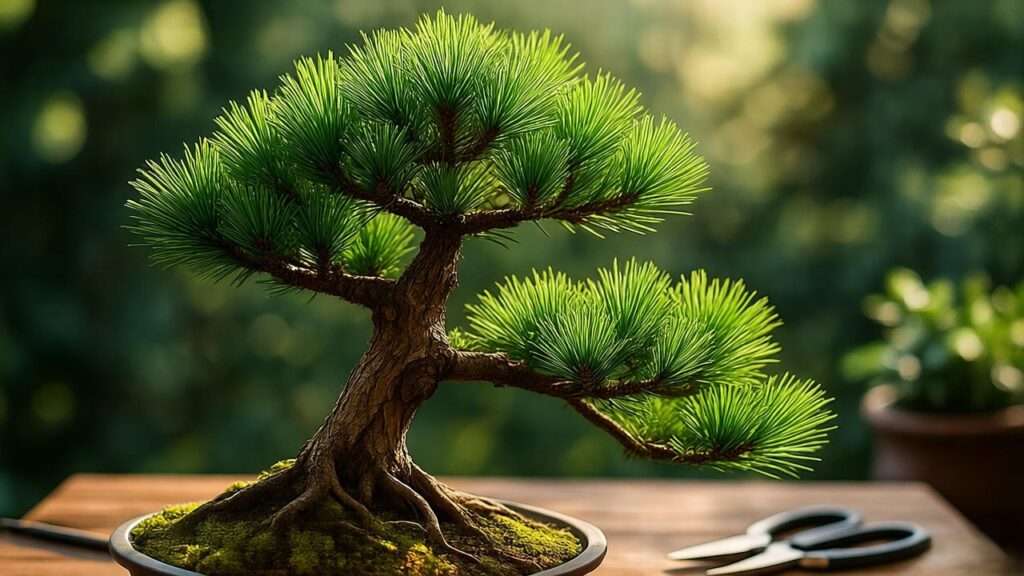Picture a tiny spruce forest, meticulously crafted to fit in the palm of your hand—a Picea bonsai tree that brings timeless elegance to your home. This miniature evergreen, with its soft needles and graceful branches, is more than just a plant; it’s a living work of art that invites serenity and patience. Whether you’re new to bonsai or a seasoned enthusiast, mastering Picea bonsai tree care can be both rewarding and challenging. In this comprehensive guide, we’ll share seven expert-backed tips to help you grow a thriving Picea bonsai, solving common care challenges and ensuring your tree flourishes for years. 🌿
Caring for a Picea bonsai tree requires understanding its unique needs, from watering to pruning. With the right knowledge, you can transform your bonsai into a stunning centerpiece that reflects your dedication. Let’s dive into the essentials of Picea bonsai care, crafted to help you succeed and inspire your bonsai journey.
1. Understanding the Picea Bonsai Tree 🌲
What is a Picea Bonsai Tree? 🤔
The Picea bonsai, derived from spruce trees like Picea abies (Norway spruce) or Picea glauca (white spruce), is a miniature version of these majestic evergreens. Known for their needle-like leaves and compact growth, Picea species are prized in bonsai for their ability to mimic full-sized trees in nature. Their dense foliage and sturdy trunks make them ideal for creating intricate, natural-looking designs. 🌳
In traditional bonsai culture, Picea bonsai trees hold a special place, symbolizing resilience and longevity. Originating from temperate regions, these trees thrive in cooler climates, making them a favorite among bonsai artists worldwide. Their versatility allows for various styles, from formal upright to cascading forms, appealing to both beginners and experts.
Benefits of Growing a Picea Bonsai 🌟
Growing a Picea bonsai offers more than aesthetic appeal. It enhances your living space with natural beauty, complementing minimalist or rustic décor. The meditative process of caring for a bonsai fosters mindfulness, helping you connect with nature. With proper care, a Picea bonsai can live for decades, becoming a cherished heirloom. Plus, it’s a conversation starter, showcasing your dedication to this ancient art form. 🌿
2. Choosing the Right Picea Bonsai Tree 🛒
Selecting a Healthy Picea Bonsai 🌱
Choosing a healthy Picea bonsai is the first step to success. When shopping at nurseries or online, look for vibrant green needles, a sturdy trunk, and a well-developed root system. Avoid trees with yellowing foliage, sparse branches, or signs of pests like webbing or sticky residue. A healthy bonsai should feel firm and show new growth at the tips. 🪴
Check the soil: It should be moist but not soggy, indicating proper care. If buying online, choose reputable sellers with detailed care guides and return policies. Avoid common mistakes like picking a tree based solely on size—focus on overall health and structure for long-term success.
Best Picea Species for Bonsai Beginners 🌿
Not all Picea species are equal for bonsai. For beginners, Picea abies is a great choice due to its hardiness and adaptability to various climates. Picea glauca ‘Conica’ (dwarf Alberta spruce) is another beginner-friendly option, with dense foliage that’s easy to shape. For advanced growers, Picea mariana (black spruce) offers a rugged, windswept aesthetic. 🌲
Consider your local climate when choosing. Picea bonsai thrive in cooler environments but can adapt to indoor settings with proper care. Research the species’ growth habits to ensure it aligns with your skill level and aesthetic goals.
3. Essential Care Tip #1: Perfecting Watering Techniques 💧
How to Water Your Picea Bonsai Correctly 🚿
Watering is the cornerstone of Picea bonsai tree care. These trees prefer consistently moist soil but are prone to root rot if overwatered. To water correctly, check the soil’s top inch daily—water thoroughly when it feels slightly dry. Use a watering can with a fine nozzle to distribute water evenly, ensuring it reaches the roots without pooling. 💦
In summer, your Picea bonsai may need daily watering, especially if placed outdoors. In winter, reduce frequency as the tree enters dormancy. Always use well-draining soil to prevent waterlogging, and ensure your pot has drainage holes.
Signs of Overwatering and Underwatering ⚠️
Overwatering can cause yellowing needles, mushy roots, or a musty smell, while underwatering leads to dry, brittle foliage and needle drop. If overwatered, reduce watering and improve drainage by repotting if necessary. For underwatered trees, gradually increase watering and mist the foliage to restore hydration. Regular monitoring prevents these issues, keeping your Picea bonsai healthy. 🌱
4. Essential Care Tip #2: Mastering Light and Placement ☀️
Ideal Lighting Conditions for Picea Bonsai 🌞
Picea bonsai trees thrive in bright, indirect light, mimicking their natural forest habitat. Outdoors, place them where they receive morning sun and afternoon shade to avoid scorching. Indoors, position near a south-facing window with filtered light or supplement with a grow light (5000–6500K spectrum) for 12–14 hours daily. ☀️
Avoid sudden changes in light exposure, as Picea bonsai are sensitive to stress. Rotate the tree weekly to ensure even growth. If you notice sparse growth or elongated branches, increase light exposure gradually.
Seasonal Placement Tips 🍂
In spring and summer, outdoor placement is ideal, as Picea bonsai benefit from natural sunlight and air circulation. In fall, transition the tree to a sheltered spot to protect from strong winds. During winter, insulate outdoor bonsai with mulch or move indoors to a cool, bright area (40–50°F) to mimic dormancy conditions. Use shade cloths in summer to prevent needle burn, ensuring year-round health. 🌿
5. Essential Care Tip #3: Soil and Potting Best Practices 🪴
Choosing the Right Soil Mix 🌍
The right soil mix is critical for Picea bonsai health. A blend of 50% akadama, 25% pumice, and 25% lava rock provides excellent drainage and aeration, preventing root rot. Akadama retains moisture while pumice and lava rock ensure air reaches the roots. Test your soil annually by checking drainage—water should flow through within seconds. 🌱
If akadama is unavailable, substitute with a mix of peat moss and perlite, but ensure it’s gritty to avoid compaction. Refresh the soil every 1–2 years to maintain nutrient availability and structure.
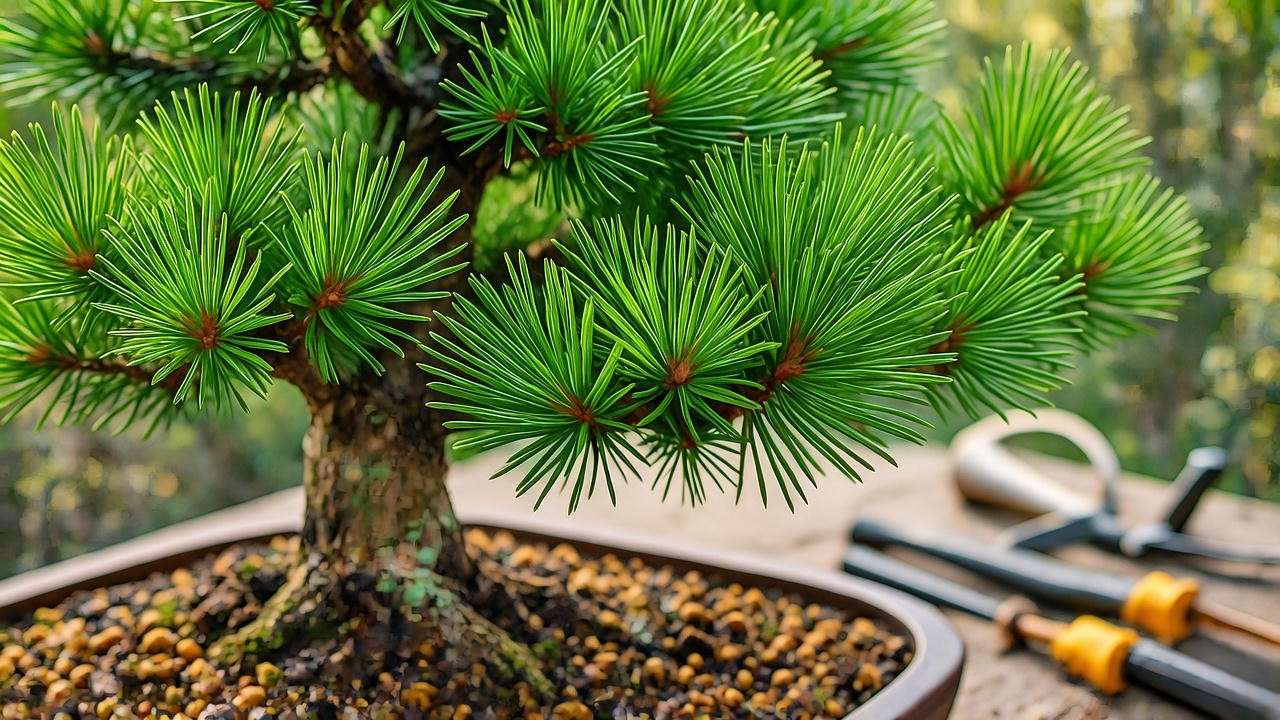
Repotting Your Picea Bonsai 🛠️
Repotting every 2–3 years for young Picea bonsai (or 4–5 years for mature ones) promotes healthy root growth. Spring is the best time, just before new growth begins. To repot, gently remove the tree, trim one-third of the root mass, and place it in a slightly larger pot with fresh soil. Choose a shallow, wide pot to enhance stability and aesthetics. 🪴
Water thoroughly after repotting and keep the tree in partial shade for 2–3 weeks to reduce stress. Avoid fertilizing for a month to let the roots settle.
6. Essential Care Tip #4: Pruning and Shaping for Beauty ✂️
Pruning Techniques for a Healthy Picea Bonsai 🌳
Pruning is essential for maintaining the shape and health of your Picea bonsai tree. There are two main types: maintenance pruning, which removes excess growth to keep the tree’s form, and structural pruning, which defines its overall shape. For maintenance, pinch back new shoots (called candles) in spring before they harden, using your fingers to avoid damaging delicate needles. For structural pruning, use sharp, clean bonsai shears to remove unwanted branches, focusing on those that disrupt the tree’s silhouette. ✂️
Always prune sparingly, removing no more than one-third of the foliage at a time to avoid stressing the tree. Clean tools with alcohol to prevent disease spread. Regular pruning encourages dense, compact growth, enhancing the Picea bonsai’s miniature forest aesthetic.
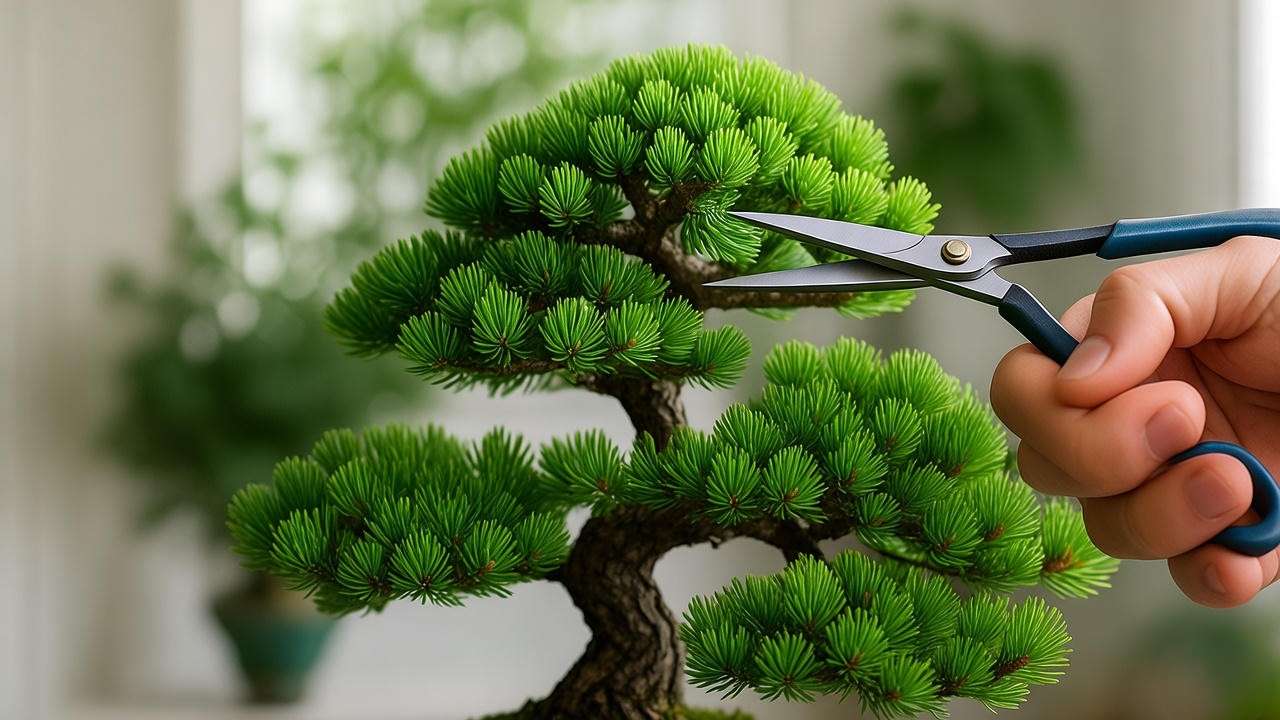
Wiring and Shaping Your Picea Bonsai 🎨
Wiring allows you to sculpt your Picea bonsai into elegant shapes, such as formal upright or windswept styles. Use anodized aluminum wire (1–4 mm, depending on branch thickness) and wrap it at a 45-degree angle around branches, avoiding the needles. Gently bend branches into the desired shape, checking for tension to prevent cracking. Leave wires in place for 3–6 months, depending on growth rate, and remove them before they cut into the bark. 🌿
For beginners, start with thinner branches to practice wiring techniques. Avoid over-wiring, as Picea branches are brittle and can snap. Study traditional bonsai designs for inspiration, aiming for natural, flowing shapes that mimic trees in nature.
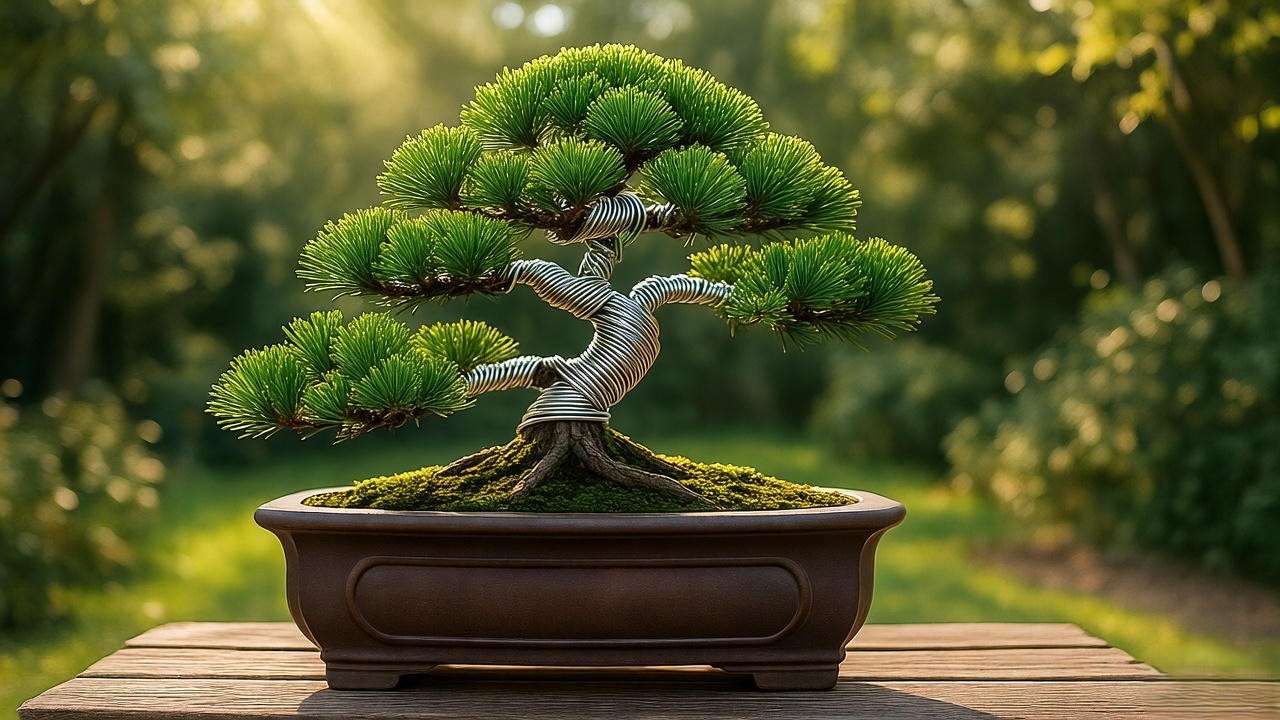
7. Essential Care Tip #5: Fertilizing for Optimal Growth 🌱
Best Fertilizers for Picea Bonsai 🌿
Fertilizing provides the nutrients your Picea bonsai needs to thrive. Organic fertilizers, like fish emulsion or compost tea, release nutrients slowly, reducing the risk of root burn. Synthetic options, such as balanced 10-10-10 liquid fertilizers, offer quick results but require careful application. Apply fertilizer every 2–4 weeks during the growing season (spring and early fall) and pause in winter when the tree is dormant. 🌼
Dilute liquid fertilizers to half-strength and apply to moist soil to ensure even absorption. For granular fertilizers, sprinkle lightly around the soil surface and water thoroughly. Always follow package instructions to avoid over-fertilizing, which can cause needle burn or weak growth.
Signs of Nutrient Deficiency 🚩
Nutrient deficiencies manifest as yellowing or browning needles, stunted growth, or sparse foliage. Nitrogen deficiency often causes pale, yellowish needles, while potassium shortages lead to weak branches. If you notice these signs, test your soil with a home kit to identify the issue. Apply a targeted fertilizer (e.g., high-nitrogen for foliage growth) and monitor recovery over 4–6 weeks. Regular fertilization prevents deficiencies, keeping your Picea bonsai vibrant and healthy. 🌲
8. Essential Care Tip #6: Pest and Disease Management 🐞
Common Pests and Diseases Affecting Picea Bonsai 🦟
Picea bonsai trees are susceptible to pests like spider mites, aphids, and scale insects, as well as diseases such as needle blight and root rot. Spider mites leave fine webbing and cause needle stippling, while aphids create sticky residue and distorted growth. Needle blight appears as brown, falling needles, often due to fungal infections in humid conditions. Root rot, caused by overwatering, leads to mushy roots and a declining tree. 🕷️
Prevent these issues by inspecting your bonsai weekly, ensuring good airflow around the tree, and cleaning tools between uses. Avoid overhead watering to keep foliage dry and reduce fungal risks.
Treatment and Recovery Tips 💊
For pests, use organic solutions like neem oil or insecticidal soap, applying them in the evening to avoid leaf burn. Spray affected areas thoroughly, repeating every 7–10 days until pests are gone. For fungal diseases like needle blight, remove affected needles and apply a copper-based fungicide, following label instructions. If root rot is suspected, repot the tree in fresh, well-draining soil and trim damaged roots. 🌱
Monitor recovery closely, and if problems persist, consult a local bonsai expert or arborist. Early intervention is key to saving your Picea bonsai from severe damage.
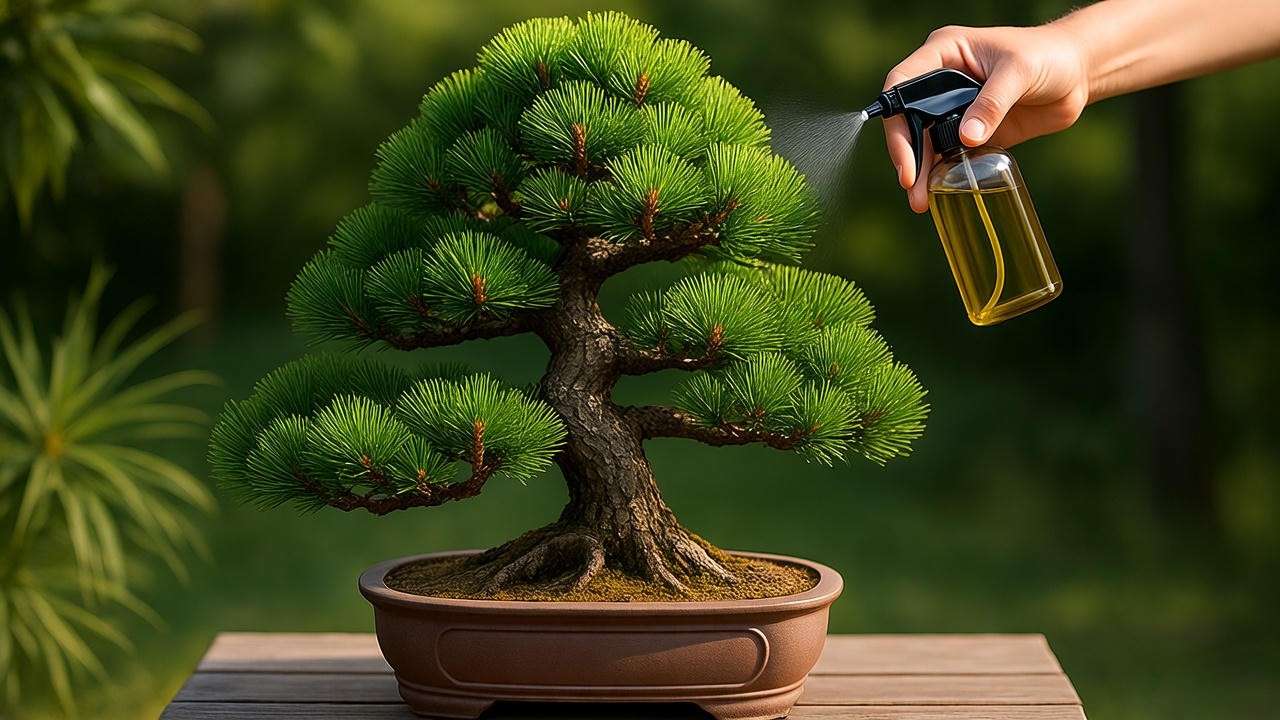
9. Essential Care Tip #7: Seasonal Care for Long-Term Success 🍁
Adapting Care for Each Season ❄️🌸
Seasonal care ensures your Picea bonsai thrives year-round. In spring, focus on pruning new growth and fertilizing to support vigorous development. Summer requires frequent watering and protection from intense heat—use shade cloths if temperatures exceed 85°F. In fall, reduce watering and prepare the tree for dormancy by clearing dead needles. Winter care involves protecting the tree from frost while maintaining slight soil moisture. 🌿
Adjust care based on your local climate. In warmer regions, provide extra shade in summer, while in colder areas, ensure proper winter insulation. Consistent seasonal adjustments promote long-term health and beauty.
Winter Dormancy for Picea Bonsai 🥶
Picea bonsai require a dormancy period in winter to mimic their natural cycle. Outdoor trees benefit from temperatures between 30–50°F, so place them in a cold frame or unheated garage. Insulate pots with mulch or burlap to protect roots from freezing. For indoor bonsai, maintain a cool, bright environment (40–50°F) and avoid warm, dry indoor air, which can disrupt dormancy. Water sparingly, just enough to prevent soil from drying out completely. 🌬️
Common winter mistakes include overwatering or exposing the tree to sudden temperature swings. Check soil moisture weekly and shield the tree from harsh winds to ensure a healthy dormancy.
10. Expert Insights: Advanced Tips for Picea Bonsai Mastery 🌟
For those aiming to elevate their Picea bonsai to show-quality status, adopt advanced techniques from bonsai masters. Refine your tree’s silhouette by selectively pruning to enhance branch taper and needle density. Experiment with jin and shari (deadwood techniques) to create a weathered, natural look, but proceed cautiously to avoid harming the tree. 🌳
To prepare for exhibitions, focus on pot selection—choose a glazed or unglazed pot that complements the tree’s style. Join a local bonsai club to learn from experienced growers and gain feedback. Incorporate your Picea bonsai into a larger display with accent plants or rocks for added visual impact. These advanced practices showcase your expertise and dedication. 🎨
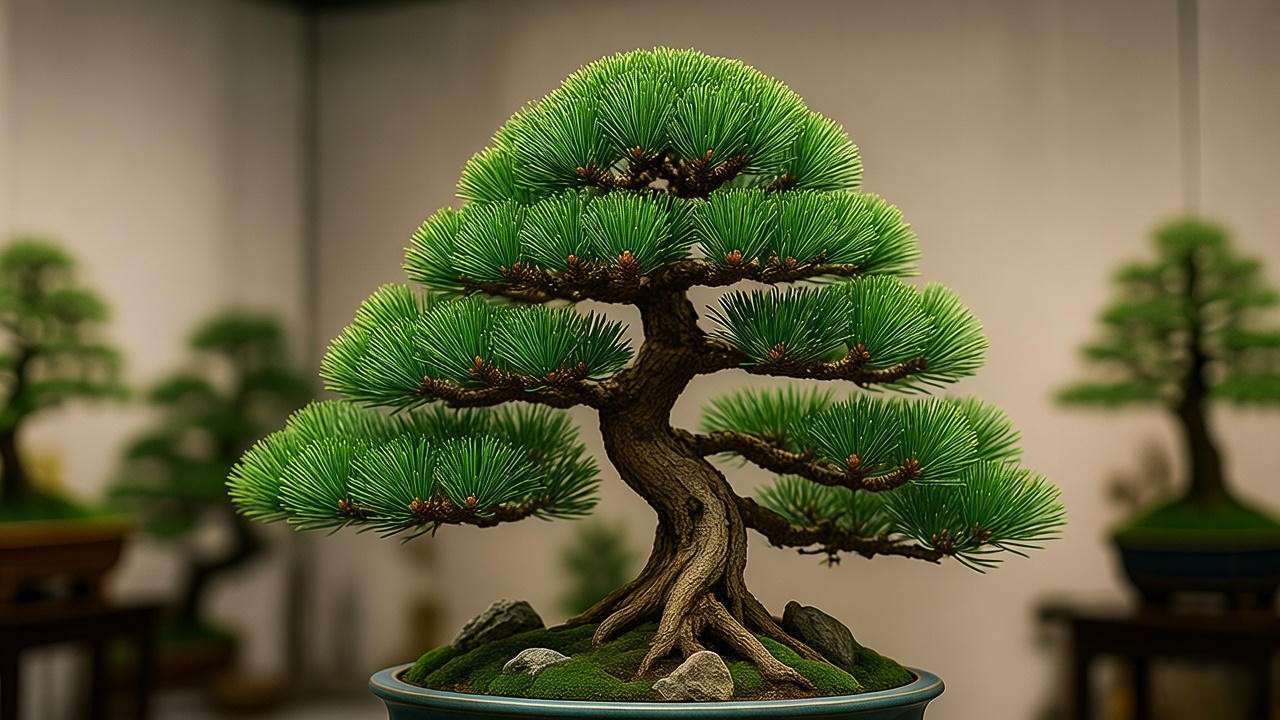
11. Troubleshooting Common Picea Bonsai Problems 🔧
Here’s a quick reference table for common Picea bonsai issues:
| Problem | Cause | Solution |
|---|---|---|
| Yellowing needles | Overwatering, nutrient deficiency | Adjust watering, apply balanced fertilizer |
| Needle drop | Underwatering, pests | Increase watering, inspect for pests |
| Weak growth | Poor light, compacted soil | Increase light exposure, repot with fresh soil |
| Brown, brittle needles | Heat stress, low humidity | Provide shade, mist foliage regularly |
Diagnose issues early by checking soil, light, and foliage weekly. If problems persist, seek advice from a certified arborist or bonsai specialist to prevent long-term damage. Regular monitoring and quick action keep your Picea bonsai thriving. 🛠️
12. FAQs About Picea Bonsai Tree Care ❓
- Q1: How often should I water my Picea bonsai tree? 💧
Water when the top inch of soil feels slightly dry, typically every 1–2 days in summer and less in winter. Adjust based on climate and pot size. - Q2: Can a Picea bonsai survive indoors year-round? 🏡
Yes, with bright, indirect light and cool temperatures (40–50°F in winter). Outdoor placement is ideal for natural growth cycles. - Q3: What’s the best way to shape a Picea bonsai for beginners? ✂️
Start with light pruning and simple wiring on thinner branches, aiming for a natural, balanced shape. Practice on less critical areas first. - Q4: How do I protect my Picea bonsai from pests? 🐞
Inspect weekly, use neem oil for early infestations, and ensure good airflow to deter pests. - Q5: Why are the needles on my Picea bonsai turning brown? 🍂
Browning may indicate heat stress, underwatering, or fungal issues. Check soil moisture, provide shade, and treat with fungicide if needed.
These answers draw from years of bonsai cultivation experience, ensuring practical and reliable advice. 🌱
13. Conclusion: Your Journey to a Thriving Picea Bonsai 🌲
Caring for a Picea bonsai tree is a journey of patience and creativity, transforming a simple spruce into a living masterpiece. By mastering the seven essential tips—watering, lighting, soil care, pruning, fertilizing, pest management, and seasonal adjustments—you’ll ensure your bonsai thrives for years. Whether you’re shaping your first tree or refining a showpiece, these practices build confidence and skill. 🌿
Share your Picea bonsai progress with the hashtag #PiceaBonsaiCare on social media, and connect with fellow enthusiasts in local bonsai communities. Explore related articles on bonsai pruning or soil mixes to deepen your knowledge, and let your Picea bonsai inspire your love for this timeless art. 🌟

